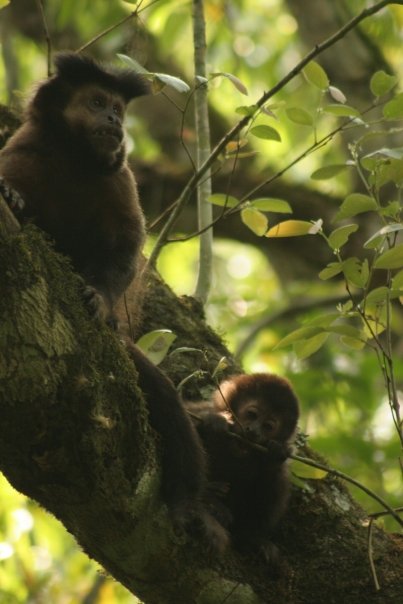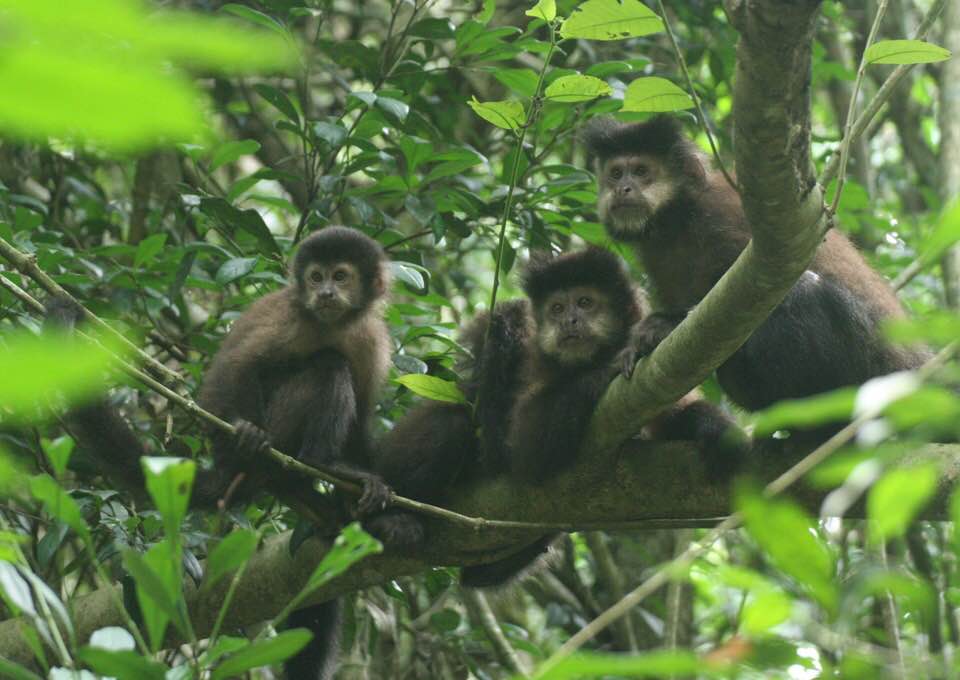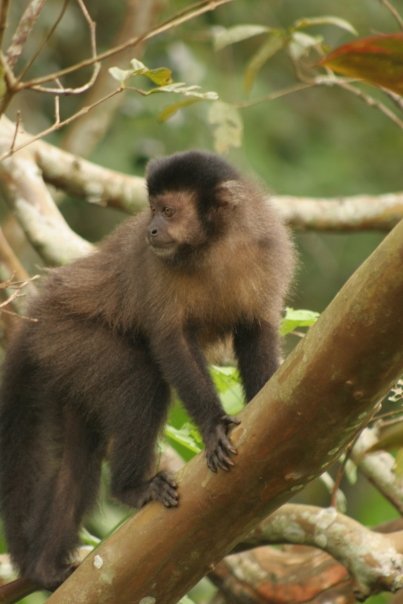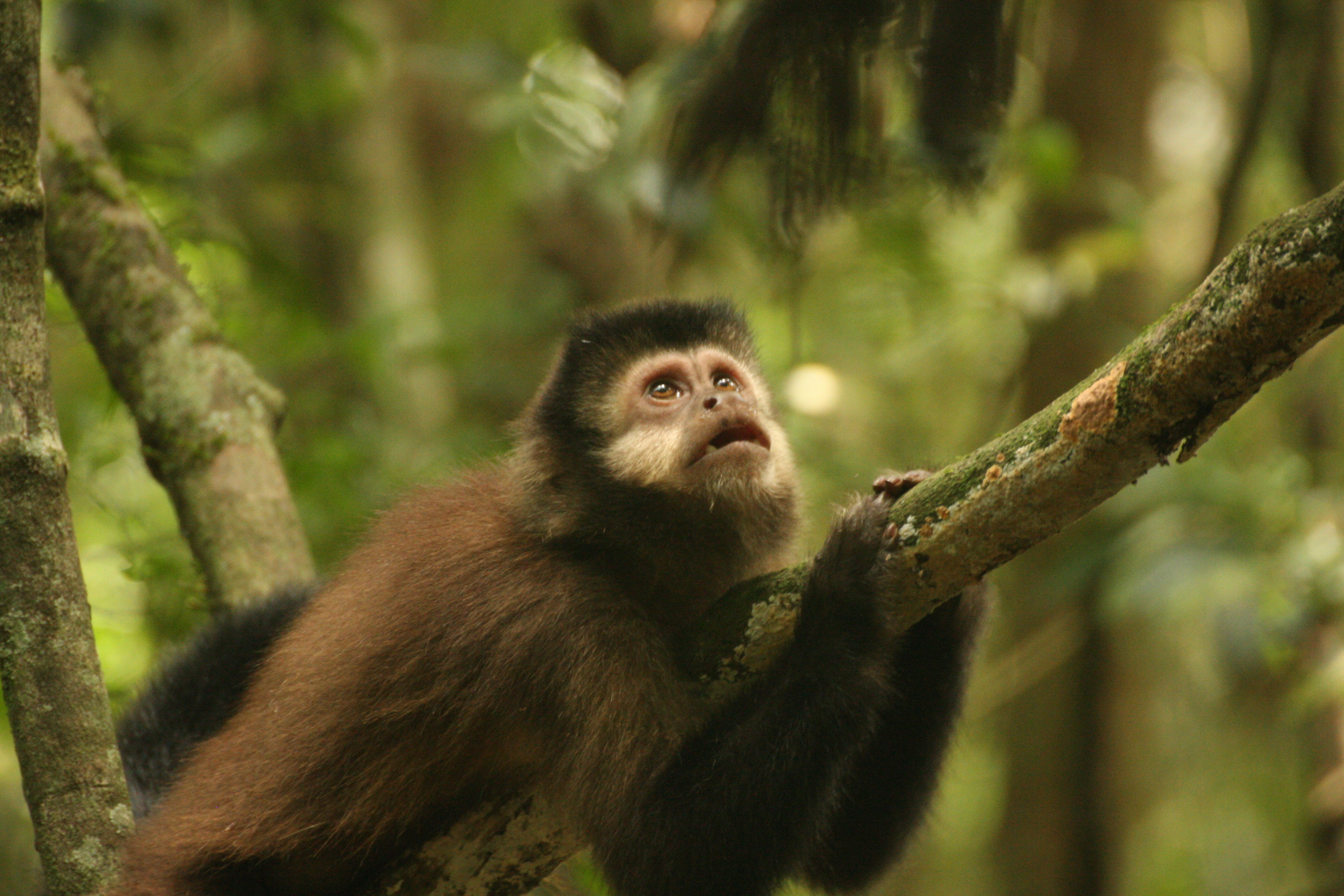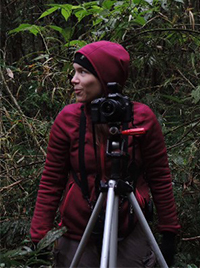
Contact Information
Name: Clara J. Scarry
Title: Assistant Professor
Office Location: MND 4030
Email: Clara.Scarry@csus.edu
Office Phone: 916.278.6572
Mailing Address: Department of Anthropology, California State University, Sacramento, 6000 J Street, Sacramento, CA 95819-6106
Office Hours: Fall 2021: Tuesday 10:00-11:30 and Thursdays 1:30-3:00
Research Interests
Research Expertise
- Intergroup aggression and male cooperation
- Collective decision-making and group coordination
- Large-scale field experiments
- Primate ranging behavior and site fidelity
I am a broadly trained biological anthropologist with a research focus on primate behavioral ecology, particularly among Neotropical primates. Much of my work has examined the connections between intergroup aggression, intragroup relationships and individual decision-making and behavioral strategies, as a means to understand the evolution of cooperation.
Because it is collective by nature, cooperation during intergroup aggression is difficult to maintain. I have focused on untangling individual strategies underpinning successful collective action in this context among others primates and identifying the correlates of these behaviors for the individual (e.g., mating access, social bonds, and hormonal response) and emergent group-level properties (e.g., semi-exclusive home ranges). I have established a long-term research project studying intergroup aggression among tufted capuchin monkeys in the Parque Nacional Iguazú, Argentina, where I am a directing PI of the “Proyecto Caí”, and also collaborate on projects with spider monkeys and woolly monkeys in Yasuní Biosphere Reserve, Ecuador.
Current Research Projects
Note: I am recruiting graduate students to work at either of these two sites on individual research projects with funding support from my current NSF grant.

Inequity aversion, individual decision making, and the emergence of collective behavior
For cooperation to be maintained reciprocal altruism, individuals must be able to assess the equitability of their own payoffs relative to their partners. In captivity, capuchin monkeys have demonstrated both the cognitive capacity to assess outcome inequities and to use prior experience to inform decisions about whether or not to cooperate with social partners. These dyadic studies, however, have been unable to address how a predisposition for inequity aversion affects the consensus decisions that groups must make for successful coordination and cooperation to occur. To examine how these behaviors translate to individual decisions within more natural social and ecological contexts, my collaborators and I are using a series of large-scale field experiments to assess 1) whether perceptions of inequity are conditional upon properties of the social relationship (e.g., dominance, social affiliation) and 2) whether the expression of inequity aversion affects group coordination.
Comparative ecology of capuchins in natural and anthropogenic landscapes
I am working as part of an international collaborative effort to use tufted capuchin monkeys as a model to study how generalist primate species respond to highly fragmented landscapes. Outside of native forest reserves, Argentine capuchin monkeys are found in anthropogenic landscapes that are dominated by exotic pine plantations and small fragments of native forest. Because capuchin populations are declining – the species is listed as vulnerable to extinction within Argentina – whereas the industrial timber plantations are expanding, developing sustainable strategies to promote coexistence of commercial stakeholders and capuchins is critical for the long-term survival of the species. Our initial work focuses on 1) a comparison of movement decisions and space use requirements by capuchins living in undisturbed versus anthropogenic habitats and 2) identifying the ecological drivers of bark-stripping behavior by capuchins, which causes commercial damage and is setting up an incipient human-capuchin conflict in the region.

Publications
Salmi R, Presotto A, Scarry CJ, Hawmann P, Doran-Sheehy DM. 2020. Spatial memory in western gorillas (Gorilla gorilla): An analysis of distance, linearity and speed of travel routes. Animal Cognition 23: 545–557. doi: 10.1007/s10071-020-01358-3
Scarry CJ. 2020. Against all odds: cooperative resource defense among tufted capuchin monkeys. American Journal of Primatology 82: e23094. doi: 10.1002/ajp.23094
Brividoro MV, Kowalewski MM, Scarry CJ, Oklander LI. 2019. Selection and use of sleeping sites by black-and-gold howler monkeys (Alouatta caraya) in northern Argentina. International Journal of Primatology 40: 374-392. doi: 10.1007/s10764-019-00094-x
Scarry CJ. 2017. Collective male resource defense during intergroup encounters among tufted capuchin monkeys. Animal Behaviour 123: 169-178. doi: 10.1016/j.anbehav.2016.10.015
Scarry CJ. 2016. Intergroup encounters. In: The International Encyclopedia of Primatology. (Fuentes A, ed). John Wiley & Sons, Inc. doi: 10.1002/9781119179313.wbprim0198 (invited)
Veilleux CC, Scarry CJ, Di Fiore AF, Bolnick DA, Kirk EC, Lewis RJ. 2016. Group benefit associated with polymorphic trichromacy in a Malagasy primate (Propithecus verreauxi). Scientific Reports 6: 38418. doi: 10.1038/srep38418
Van Belle S, Scarry CJ. 2015. Numerical assessment during collective action in Neotropical primates. Philosophical Transactions of the Royal Society, B. (invited) doi: 10.1098/rstb.2015.0007
Wheeler BC, Scarry CJ, Koenig A. 2013. Rates of agonism and dominance style among female primates: associated factors and implications for socioecological models. Behavioral Ecology 24:1369-1380. doi: 10.1093/beheco/art076
Koenig A, Scarry CJ, Wheeler BC, Borries C. 2013. Variation in grouping patterns, mating systems, and social structure: what socioecological models attempt to explain. Philosophical Transactions of the Royal Society, B. (invited) doi: 10.1098/rstb.2012.0348
Scarry CJ. 2013. Between-group contest competition among tufted capuchin monkeys (Sapajus nigritus) and the role of male resource defence. Animal Behaviour 85: 931-939.
Scarry CJ, Tujague MP. 2012. Consequences of lethal intragroup aggression and alpha male replacement on intergroup relations in tufted capuchin monkeys (Cebus apella nigritus). American Journal of Primatology 74:804-810.
Williams RC, Nash LT, Scarry CJ, Videan EN, Fritz J. 2010. Factors affecting wounding aggression in a colony of captive chimpanzees (Pan troglodytes). Zoo Biology 29: 351-364.

Education:
Ph.D., Biological Anthropology, Stony Brook University
M.A., Biological Anthropology, Stony Brook Unviersity
B.A., Anthropology, Arizona State University
B.S., Biology and Society, Arizona State University
Courses that I teach:
ANTH 1: Introduction to Biological Anthropology
ANTH 133: Life of Primates
ANTH 154: Primate Behavior
ANTH 155: Fundamentals of Biological Anthropology
ANTH 179: Observing Primate Behavior
ANTH 202: Biological Anthropology Seminar
